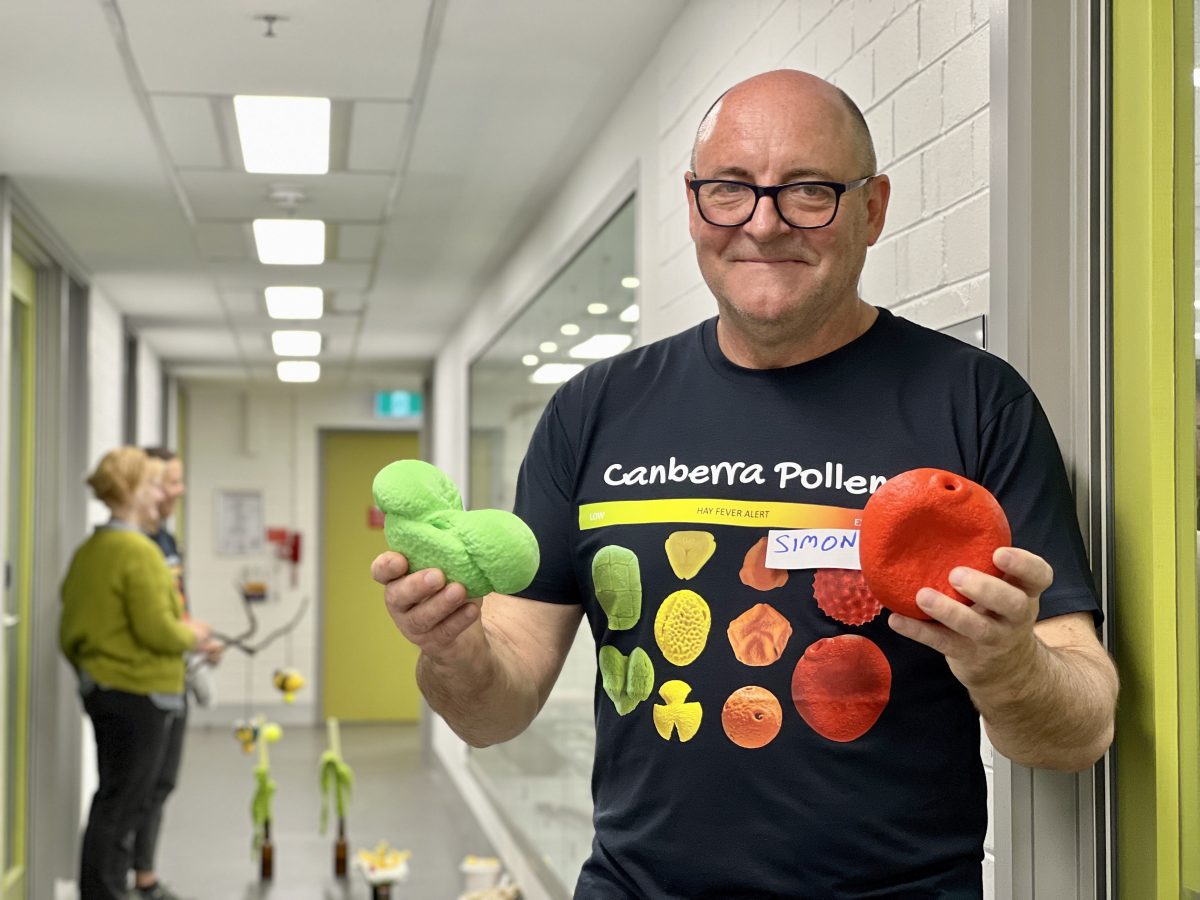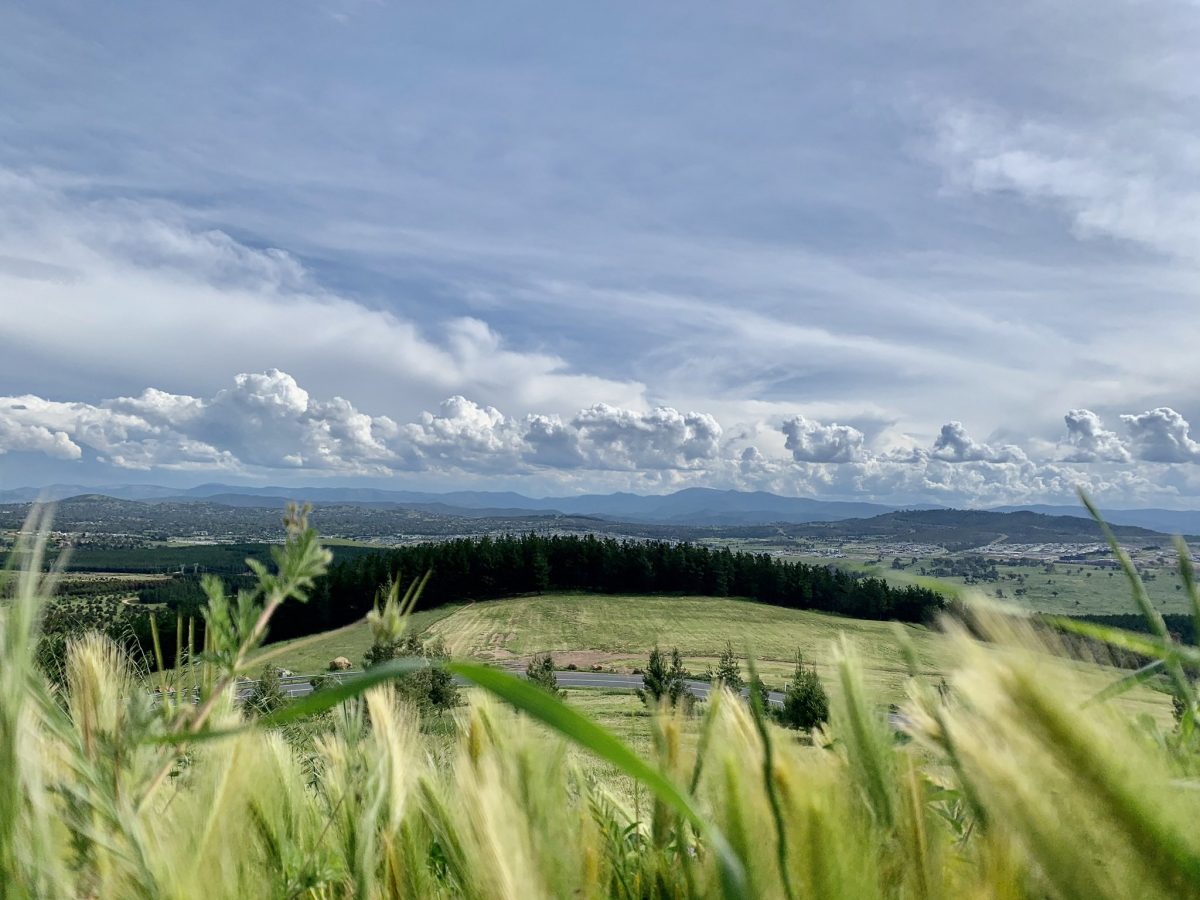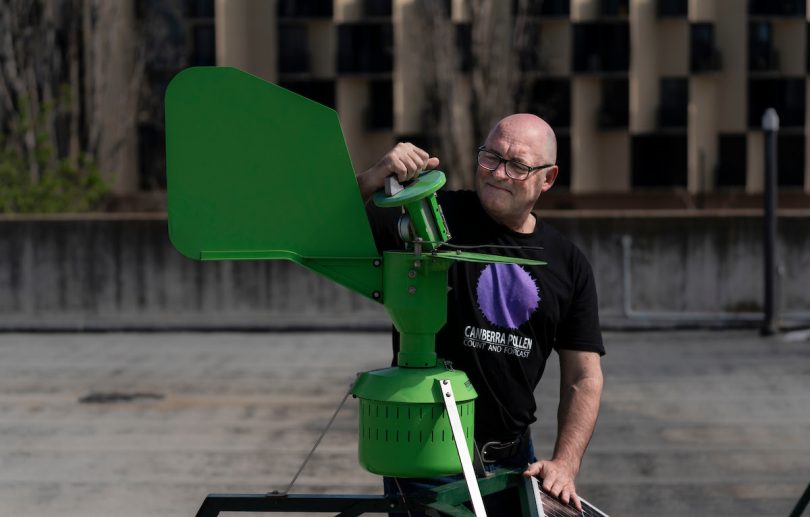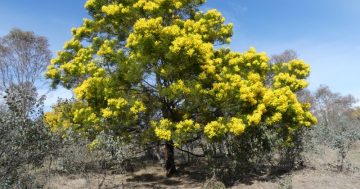
Dr Simon Haberle heads up the ANU’s Canberra Pollen Monitoring Centre. Photo: James Coleman.
It’s not even September and the cars are already covered in a disgusting layer of yellow powder. This can’t be a good sign of things to come.
Sure enough, Professor Simon Haberle, better known as ‘That Pollen Guy’ on Twitter/X, is director of the Canberra Pollen Monitoring Centre at the Australian National University (ANU) and says Canberra’s hay fever and asthma sufferers should prepare for the worst this season.
“It’s the tree pollen season at the moment,” he says.
“We’re pretty much in the middle of things like the Pinus and Cypress pina kicking off pollen, and that causes the yellow smears and dustings on our cars.”
Tree pollen season normally begins around September and October when the plane, birch, elm, poplar and willow trees join in, so Professor Haberle says we’re tracking early and high.
“It’s an above-average season.”
Then, of course, there’s the final boss to beat. Grass pollen season normally comes along in the first week of October, but the professor says we can expect this early – and intense – too.
“The greenness of the grass around Canberra is a pretty good predictor we’ll have an earlier and quite strong grass pollen season, and what we’ve seen so far this year, compared to previous years, is what we’ve got a lot of green grass.
“I think it’ll be at least an average, or most likely, above average grass season.”

Rye grass is most often the culprit behind Canberra’s extreme levels of pollen. Photo: Canberra Pollen, Twitter/X.
So what’s going on? And when will it end?
The Pacific Ocean’s climate pattern seems to be creeping back into a La Niña phase which, according to the Bureau of Meteorology (BOM), comes with “higher than average winter, spring and early summer rainfall over much of Australia”.
Professor Haberle’s records over the last 10 years show while El Niño dries out the grass and leads to average or below-average seasons, when La Niña swoops in, it’s the opposite.
There’s more.
“I think it’s a signal for the future,” he says.
“Climate change is going to drive different sort of climate patterns, and certainly warmer weather and more La Niña events will produce more and stronger pollen seasons.”

The pollen counter itself. Photo: Jamie Kidston, ANU.
Last year in September, Professor Haberle headed up the ANU’s first ‘Pollen Immersia Day’ where members of the public were invited to hear about the science of measuring pollen.
There were microscopes set up so people could get a closer look at the ‘enemy’, as well as large 3D models of different pollen types and pollen-themed games.
He says they’re planning a repeat for Friday, 13 September, this year, following last year’s success.
“There were a lot of hands-on experiences to be had – the microscopes and the games – that people really enjoyed.”
As before, there will be two 1.5-hour sessions held at 10 am and 2 pm, and people are encouraged to register to attend the ‘Immersia 2024: Pollen Immersia Day’ on the ANU website.
Allergic rhinitis (or hay fever) affects about 18 per cent of people in Australia and New Zealand, and asthma around 10 per cent. The ACT has the highest rate of hay fever in Australia, affecting almost one in three residents. Asthma affects one in nine Canberrans.
Canberra Pollen posts information to its Twitter/X page on daily pollen counts and forecasts for Canberra.
Original Article published by James Coleman on Riotact.





